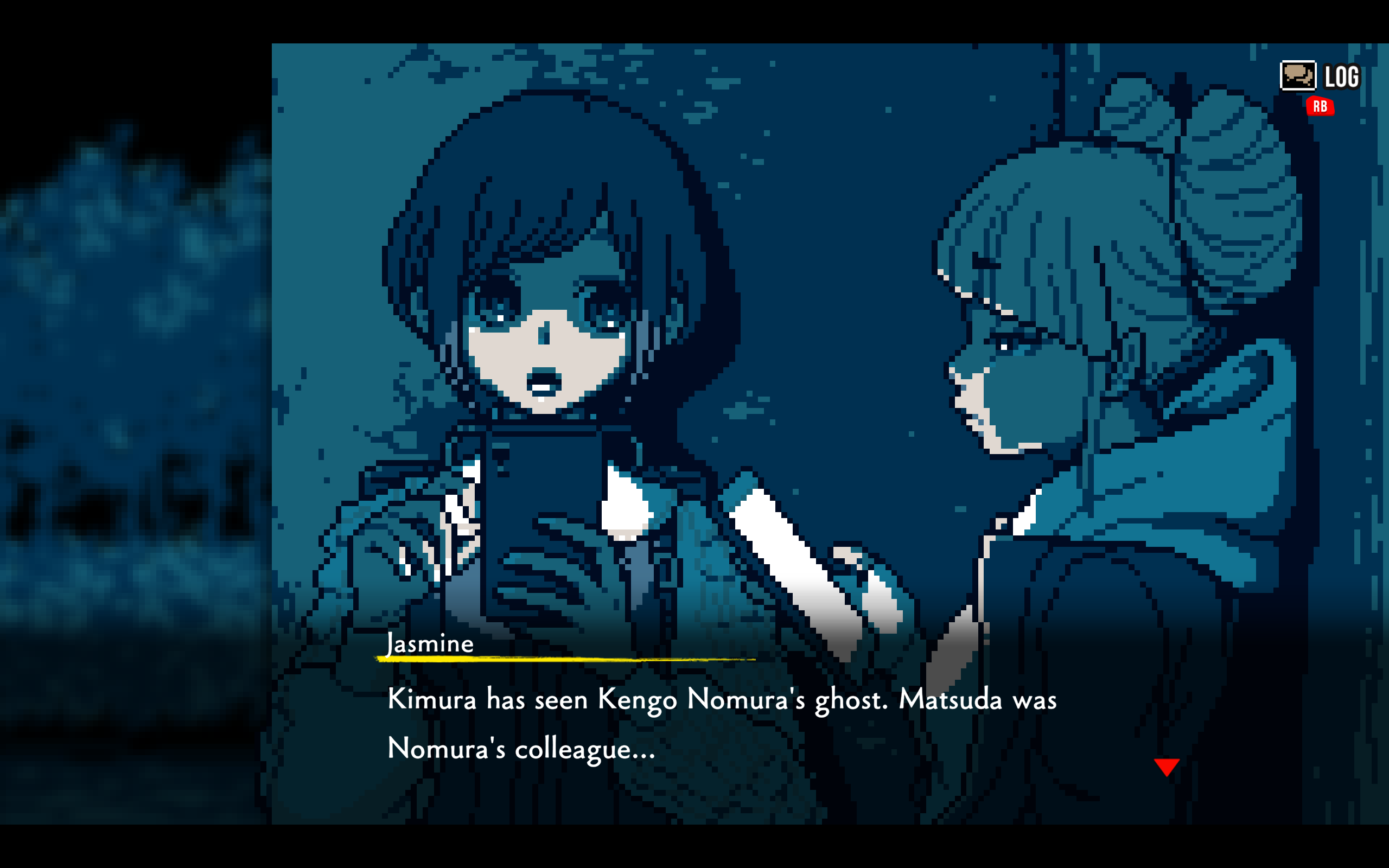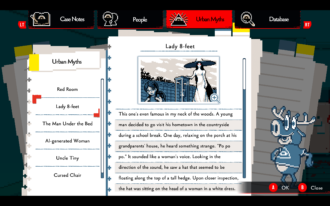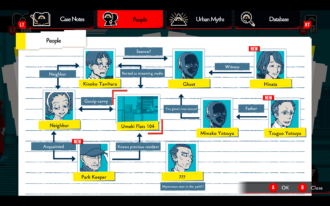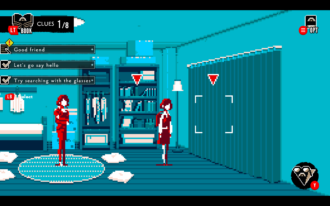Platforms:
PC, Nintendo Switch, PS5
Released:
February 13, 2025
Publisher:
SHUEISHA GAMES
Developer:
Hakababunko
Investigate cursed objects, haunted bedrooms, and underground nether realms in Urban Myth Dissolution Center, a mystery adventure game with some deliciously crunchy pixel art and a whole lot of spooky stories to tell.
Developed by Japan-based studio Hakaba-Bunko, this is the first full-length title from the team who previously created a bite-sized series of detective adventures in Makoto Wakaido’s Case Files, each of which can be completed in an hour. The DNA of this series runs through Urban Myth Dissolution Center, which episodically presents a collection of occult mysteries to solve.
Urban Myth Dissolution Center plays like a hybrid of a visual novel and a classic point-and-click adventure. You take on the role of Azami, a curious girl who stumbles into a mysterious detective agency and gets blackmailed by Director Meguriya into working for them. Unlike your traditional investigators, this agency deals with matters of the occult – anyone plagued by a spirit, curse, or otherworldly mystery can come to have their problems identified and resolved. Meguriya handily has the power to project his vision across time and space, allowing him to observe Azami as she anxiously sets out with her wry companion Jasmine to solve a series of mysteries.
Each case begins with the process of Identification, where you figure out which famous urban myth is involved, and ends with Dissolution where you determine exactly what’s going on. Once you’re ready for one of these milestones during an investigation, Meguriya will phone and trigger an elaborate cutscene where he’ll guide Azami through piecing together what she knows about the case so far. These sections are visual delights, showcasing the game’s best animations and leaning heavily into a spectacularly camp occult aesthetic. The soundtrack amps up during these sequences (particularly during Dissolution) and helps to build up a tonne of hype before a big reveal. It’s reminiscent of the grand, epic denouements that occur during trials in the Ace Attorney series.

Despite these dramatic scenes, playing as Azami feels more like Detective Pikachu than Phoenix Wright. The moment-to-moment gameplay involves wandering through scenes, gathering clues, and speaking with witnesses. You’ll also scour social media for information, searching through vicious comments and hunting for any helpful rumours.
Once you’ve gathered some details, you can form a hypothesis by piecing together bits of information. Azami has the special power of Clairvoyance which allows her to see echoes of the past, which adds a spiritual layer to the investigation. Unfortunately, there’s very little actual puzzle-solving or room for creativity within each case. Most scenes progress linearly, with the “challenge” elements being simple tests of recall. Characters over-explain and repeat information so much that there’s never any doubt as to your next step, and you’ll often have figured a scenario out early on and find yourself going through the motions waiting for Azami to catch up.
Even when there are puzzles (such as inputting a combination to a padlock or deducing how an intruder entered someone’s house), their solutions have either been foreshadowed so thoroughly that they turn into exercises in data entry, or you’re unable to even guess at the solution until Azami has had someone literally tell her the answer. It’s a shame that these opportunities for gameplay engagement are squandered – there’s definitely no need for the complexity of something like Lorelei and the Laser Eyes, but a little more of a cognitive challenge would have helped to keep me interested in the story.

There is an overarching narrative to Urban Myth Dissolution Center, involving a creepy online terrorist network that’s calling for a “Great Reset” and may be pulling the strings behind many of the game’s cases. Each case trickles a little more information about this group and about Meguriya’s obsession with stomping them out, as well as Jasmine’s true goals.
It’s a decently layered mystery, but some stilted writing and awkward narrative pacing make it difficult to get too invested. While the translation is technically quite good (particularly in social media sections, which lean heavily into online culture) it feels like some of the narrative’s nuance may have been lost in the transition to English.
The urban myths themselves are wonderfully varied and span both Japanese and Western folklore. You’ll read about various sinister yokai alongside high-school classics like Bloody Mary. When Azami hears about a new myth or discovers one on social media, she adds a log entry to her journal, which usually also contains rumoured directions on how to summon or encounter the spirit, ghoul, or curse involved. These little stories add a great touch of worldbuilding, and it’s always neat to discover a new spook to add to your own mental ledger of anxieties – browsing through the journal feels like a midnight scroll through the creepypasta wiki.
Despite its relatively uninspiring detective gameplay and awkward writing, it’s hard not to enjoy the camp scenarios and stunningly stylistic pixel art of Urban Myth Dissolution Center. Each of its episodes presents a compelling scenario to solve and features larger-than-life characters, and its focus on social media and internet culture sets an intriguing tone for its creepy mythology to play against. While it’s not likely to hold the attention of anyone keen on a good detective story, fans of visual novels and urban legends will definitely find some spooky joy here – just don’t expect a challenge.
6
Decent
Positive:
- Gorgeous pixel art and aesthetic
- Unique depiction of contemporary "urban" horror
Negative:
- Awkward writing and narrative pacing
- Detective gameplay isn't very engaging
Leaning more into visual novel territory than detective work, Urban Myth Dissolution Center firmly guides you through some of the spookiest stories in contemporary folklore. Its striking pixel art and emphasis on social media as a tool for investigation lend it a unique charm, though it’s let down by repetitive gameplay and awkwardness in its narrative pacing. Worth a look for fans of creepypasta, but those keen on a more fleshed-out investigative experience may be left wanting.











